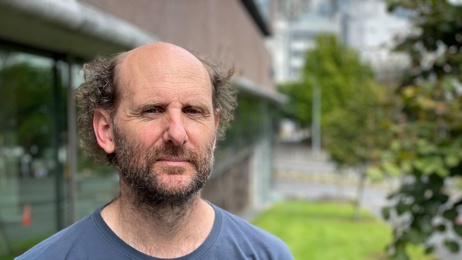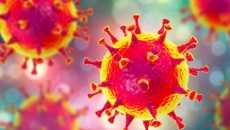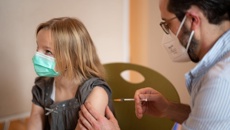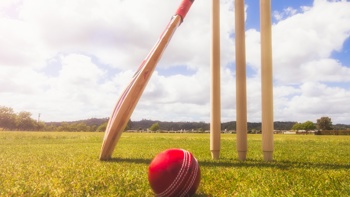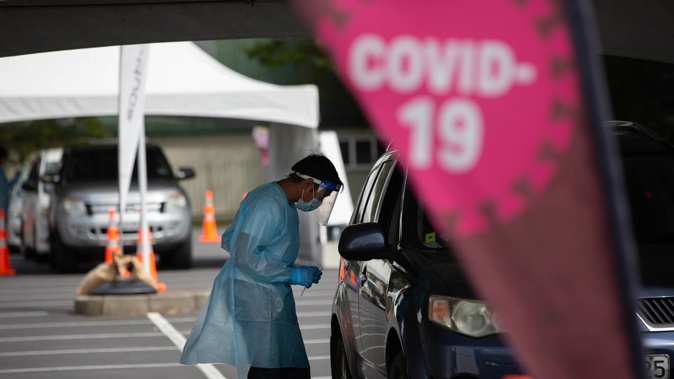
Health boss Ashley Bloomfield has left open the possibility Auckland could move straight to the 'orange' setting when the country's new traffic light system starts in around a fortnight.
But he remains coy on whether the region might see further freedoms as early as next week with a move to level 3.3 - allowing bars and restaurants to open - ahead of the traffic light system being implemented.
On the traffic light system and the potential that Auckland could move straight to the orange light setting soon, Bloomfield acknowledged that that was still something officials were looking at.
"We are working on the criteria to inform that decision and it includes vaccination rates - that's important," Bloomfield told Newstalk ZB's Mike Hosking.
Auckland's three DHBs are sitting on 92.8 (Waitemata), 95.4 (Auckland) and 91.3 (Counties-Manukau) first-jab percentages, with second jabs all likely to be past the 90 per cent mark by early December at the latest.
But other regions are still sitting in the low 70s, including Northland, and will most likely move to the red-light setting.
Bloomfield said the signal was "very strong" that the country was looking to move to the traffic light system soon, with the Prime Minister set to announce the date on November 29.
Hosking quizzed Bloomfield on why Auckland should be given a red light, given that setting was for when the "health system was facing an unsustainable number of hospitalisations" - and that wasn't the case in the region.
"That's right actually, we've seen that impact with vaccination - hospitalisations have levelled off in the last week or so," said Bloomfield. "ICU occupancy is below what we had originally modelled - six people yesterday, which is really good.
"I think there's a difference where places might go into on the framework but remembering that actually for Auckland, even red is more like a 2, 2.5."
Hosking: "That's what I'm asking. Based on your criteria, Auckland should be on orange because there is no strain on the health system and everyone's as vaccinated as you want them to be. And if that's your criteria, what do we need to do to get to orange?"
Bloomfield: "That's exactly what we are working on and we'll be providing that advice through next week. What are the criteria and how you apply those.
"Where places or regions might go on to the model at this point in time - and that's still not today, it's in the next few weeks - will be different from what happens when we really bed the model in."
Bloomfield remained coy when asked directly if Auckland is due to move to alert level 3.3 next week; saying he could not pre-empt what the Government will announce. However, public health advice continues to be considered ahead of the decision.
Bloomfield told Hosking that we would initially have enough AstraZeneca to give to about 1 per cent of the population.
Covid cases tracking to high-end of modelling
Covid-19 case numbers are tracking towards the higher end of previous modelling as they spread further around the country, raising concerns around the impending move to the traffic light system.
Recent community case numbers – 167 were announced yesterday – weren't a surprise to the University of Canterbury's Professor Michael Plank and were tracking towards the upper end of the scenarios modelled in a study he co-authored, released in late October.
"It is broadly in line with what we would've expected but it doesn't mean it's okay or good."
Te Pūnaha Matatini's study simulated Auckland's Delta outbreak through to early January and presented scenarios for the outbreak in the future: one where spread was low and another where spread was high or very high.
"It certainly looks like we're tracking closer to that high transmission scenario in terms of the case numbers," Plank said.
"We have "high" and "very high" [transmission scenarios in the modelling] and it's sort of tracking somewhere between those two in terms of cases."
Median estimates from the modelling indicated that, under the scenario of "very high" transmission, weekly case numbers could reach 6629 by the week starting December 29 – with around 425 weekly hospital admissions, 378 beds occupied, and 30 deaths.
The modelling results from the study didn't take into account any easing of restrictions after October 6, he said.
New location of interest in Christchurch
A new location of interest linked to a positive Covid case has been identified in Christchurch.
A bus that travelled from the Christchurch Airport to the bus interchange (platform A) on Saturday (November 13) has been connected to a person with the virus.
The affected vehicle is Bus 3, Fleet 2976. The travel time was between 2.30pm and 3.15pm.
Passengers who were on the bus are advised by the Ministry of Health that they should monitor their health for 14 days after exposure and get tested for Covid if symptoms start to develop during that time.
No other locations of interest or exposure events have been released by the ministry this morning.
Impact of level 3.2 in Auckland not yet seen in numbers - expert
Covid-19 modeller Professor Shaun Hendy says we have not yet seen the impact of reducing restrictions in Auckland 10 days ago - but we may start to see that impact soon.
Speaking to TVNZ's Breakfast, he said: "Those (new cases) will just be starting to filter through now. So we might start to see that effect over the next week.
"There is also a lag when you're looking at the data," he said.
If those changes have led to increased infections, we will start to see that in the next week and reflected in the community cases.
However, things were actually looking "pretty good", he said.
The R number of the virus has been dropping over the last few weeks and is getting closer to 1.
"One and below 1 is where we want to be."
When we get below 1, we will start to see case numbers drop over time and it will be a sign that our vaccination rates have gone ahead of the virus.
However, the opening of retail stores in Auckland just over a week ago may have just "kicked things up" more again, Hendy said.
Hendy said the step back to opening up hospitality was a much riskier step than opening up of retail, due to the nature of hospitality businesses - which will see people coming into close contact with each other and for a long period of time than being in a shop, for example.
"I would certainly think that was a riskier step - particularly before we go into the traffic light system."
Hendy said we should be cautious about moving Auckland into alert level 3, phase 3, next week.
He said officials should wait to see how opening retail stores in Auckland had impacted the number of community cases.
If the Government remains relaxed, we could see another significant outbreak, Hendy said.
If we still have high community cases before moving into the traffic light system, case numbers could still increase in pockets of the community.
Looking at the new year, he said Aucklanders may stay in the red alert setting of the traffic light system for a long period of time.
People should also still expect that regional lockdowns of sorts may still take place.
Bloomfield: Small group waiting for AstraZeneca vaccine
Director general of health Ashley Bloomfield told the AM Show there were a small group of people who were waiting for the AstraZeneca vaccine and yesterday 100,000 doses arrived in the country.
As of 6pm last night, half a million vaccine certificates were downloaded last night, Bloomfield said.
Bloomfield said cases were popping up in the regions and it was likely we would see more when the Auckland region opened.
"We have got to make sure we are taking all the measures...people need to be on alert because the virus could pop up anywhere," he said.
Increasing vaccine rates were going to be a huge enabler in New Zealand having a good summer, Bloomfield said.
The director general of health was pushed on why data relating to unvaccinated Māori wasn't being released to Whānau Ora.
Bloomfield said information of those enrolled in the organisation had been handed over but the problem was releasing data of those who were not enrolled.
We continue to work with iwi and Whānau Ora to get that information, Bloomfield said.
New Zealand is expected to move to the "traffic light system" soon after Cabinet meets on November 29 - with Auckland and most likely regions with low vaccination rates moving into its highest setting, red.
Māori health analyst Dr Rawiri Taonui said he was concerned a premature introduction of the traffic light system paired with low Māori vaccination rates and the opening of the Auckland border without systematic policing would lead to a big surge in Māori cases.
From December 15, people who have either been fully vaccinated, or have a negative test 72 hours prior to departure, will be able to leave Auckland and visit other parts of the country.
Taonui predicted, based on yesterday's seven-day case average, there would be 6700 Māori cases by Christmas in the Delta outbreak in total and 13,600 cases overall.
"What we know is when there has been a significant change resulting in more movement there's been a surge in Māori numbers. When Auckland went to level 3 on September 22, one week later there was a big surge in Māori numbers and that's culminated in 45 consecutive days where Māori have been the highest number of cases."
Yesterday, the Ministry of Health reported the deaths of two patients with the virus at hospitals in Auckland.
A woman in her 80s with the virus died at Middlemore Hospital and a man in his 90s, who had been living been living at the Edmonton Meadows Care Home, where a number of people had tested positive, died at North Shore Hospital.
"Our thoughts are with their families and friends at this deeply sad time," the Ministry of Health said.
The man had a number of underlying health conditions and was receiving appropriate ward-level care after being admitted earlier this month with Covid-19, the ministry said.
Meanwhile, Auckland health officials are providing support to people at Avondale's Rosaria Rest Home where five residents had tested positive for the virus.
There were 85 people in hospital yesterday with Covid-19, including six in ICU, as new cases were announced in Northland, Auckland, Waikato, Bay of Plenty, Mid Central and Canterbury while a case announced in Lakes DHB on Wednesday was officially reported in yesterday's figures, the Ministry of Health's statement said.
Prime Minister Jacinda Ardern admitted people would be worried about Covid spreading across the country after news broke yesterday morning of more centres dealing with cases in the community.
Ardern, speaking to media after a visit to the Turanga Health centre in Gisborne, said "we know there will be concern about [Covid's] movement, which is why we have put in extra layers of protection".
Plank said changes in restrictions, including Auckland's move to step 2 in alert level 3 and the reopening of schools could be a reason why case numbers were sitting towards the high modelled scenario.
"The move to step 2 and the reopening of schools, it remains to be seen really what effect they will have because that happened quite recently so that could feed into case numbers next week. It might be that we start to see case numbers tracking upwards again.
"With the loosening of restrictions and move to the traffic light system and the opening of the border, all of these things will allow cases to spread more easily and to spread to new parts of the country."
Otago University epidemiologist Michael Baker said there had been a steady increase in cases for the last seven weeks, however, there had been some levelling off in that increase in the last week.
"There is no longer an exponential rise," Baker said, "and perhaps the beginning of a plateauing. However, it is too soon to draw any conclusions."
More than 20,000 Covid-19 vaccine doses were administered on Wednesday, with 91 per cent of people having received their first dose, and 82 per cent fully vaccinated. For Māori, those figures were 78 per cent and 62 per cent, respectively.
Covid-19 Response Minister Chris Hipkins announced a second Covid-19 vaccination would be available to eligible New Zealanders from November 26 as 100,000 doses of AstraZeneca vaccine arrived in the country.
"Looking at [Thursday's] case numbers, and the current geographical spread, I can't stress enough how important it is that we have as many people as possible vaccinated," Hipkins said.
"Vaccination is the best way to protect ourselves, our whānau and our communities against Covid-19."
Take your Radio, Podcasts and Music with you



